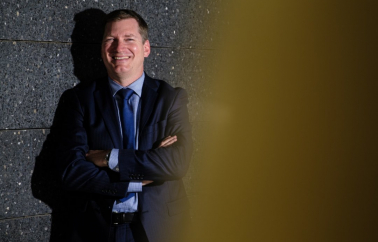
Role of the STR in setting up of a crisis unit in its district in connection with the supply of energy resources - by Boris Cuanoud, Prefect of the district of Morges, Switzerland
Role of the STR in setting up of a crisis unit in its district in connection with the supply of energy resources
By Mr. Boris Cuanoud
Prefect of the district of Morges
Canton of Vaud - Switzerland
One of the vocations of institutions is to prepare, to anticipate potential crises and to have considered alternatives in order to be prepared to face what could happen and to be able to respond in efficient manner.
In a European context strained by the conflict in Ukraine, it has become clearer than ever that the regions are interdependent in terms of supply, in particular energy. This revealed weakness requires first of all the taking of energy saving measures. The risk being that these savings are not sufficient to allow the company to continue to operate normally, scenarios up to quotas or load shedding had to be established. If this were to be the case, one of the priorities is to at least be able to ensure the continuity of the harvest and the transmission of information between the authorities and the population. It is for this purpose that it was decided to set up prefectural crisis units equipped with wireless and independent means of communication.
The government of the canton of Vaud, the Council of State, can delegate the operational management of a crisis to the Cantonal Command Headquarter. It is this entity that will trigger the commitment of the prefectural crisis cells.
Each district has a prefectural crisis unit. This cell must be self-sufficient in terms of its power supply and must have the capacity to ensure two-way communication between the cantonal authority and the municipalities using VHF radios, and POLYCOM, the national radio network of the authorities and organizations responsible for rescue and safety. These channels make it possible to communicate and exchange data via a uniform, homogeneous and secure infrastructure. The challenge is to be able to best meet the needs of the population in this degraded mode of operation. The ambition is not to provide all the services but to guarantee a vital minimum.
These crisis cells are made up of a fraction of staff from the prefecture, the district civil protection commander and his direct subordinates. It is the prefect who has the task of leading this crisis unit. The municipalities transmit their situation report to this unit, which consolidates the data and transmits it to the Cantonal Command Headquarter. Within its sphere of competence, the cell manages the crisis on its territory, makes every effort to ensure the functioning of the cantonal administration during the crisis, ensures the protection of the population and ensures the delivery of services deemed to be priorities.
These prefectural crisis cells can be activated in all out of the ordinary situations, not only in the event of a power shortage, but also in the event of a breakdown in the usual communication network or a major cyber-incident.



